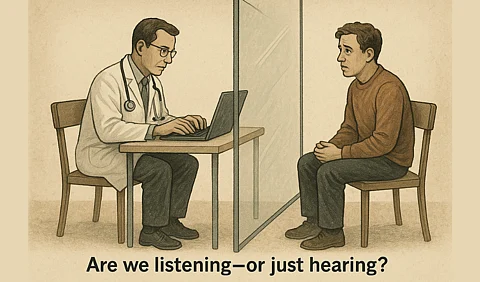A few days ago, my mother sustained an accidental injury while working in the kitchen and needed sutures. I took her to a department in the same medical college where I am working as a Senior Resident. I assumed they would take good care of her since I was a resident there, but to my surprise, that wasn’t the case. Instead, I regretted every second we spent waiting. It took almost seven hours for a simple suturing procedure.
Not a single resident there acknowledged me or bothered to ask why I was sitting and waiting, just like any other patient. I waited patiently until it was finally our turn, and we got the suturing done. But the whole experience left me reflecting on the lack of empathy shown by the residents; it made me question how easily compassion can be overlooked, even within our medical community.
This experience, though personal, reflects a larger, troubling pattern in medical practice: the gradual erosion of empathy among healthcare professionals.
Empathy is a fundamental human trait. While empathy is a natural human capacity, it can become blunted over time if not consciously exercised, especially under chronic stress.
After the incident, I researched the topic and, surprisingly, found a large number of research articles available. It made me realize that if you don’t exercise empathy, or if you're constantly overwhelmed, it can weaken. But it’s still there.


